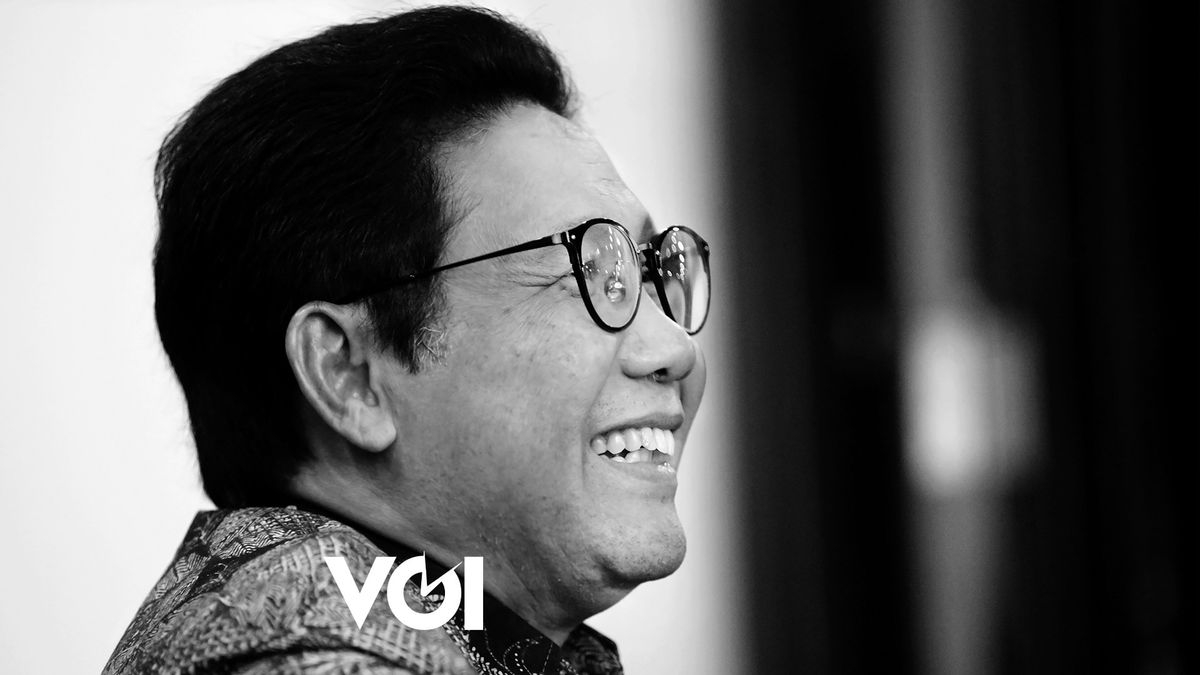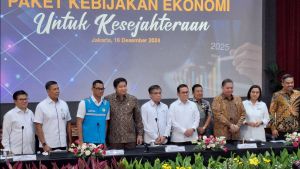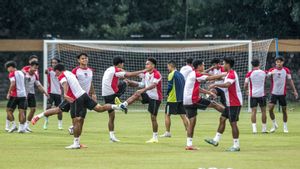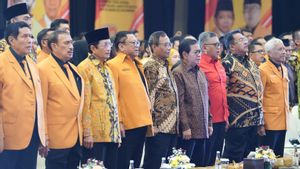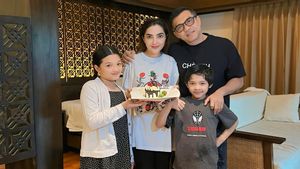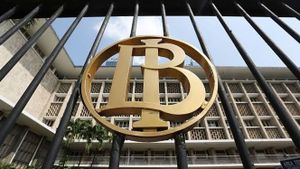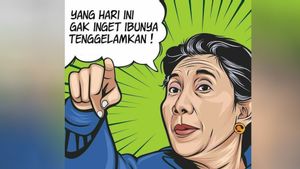According to the census, 71 percent of Indonesians live in villages, the remaining 29 percent live in cities. Therefore, said Abdul Halim Iskandar, Minister of Villages, Development of Disadvantaged Regions and Transmigration (PDTT) of the Advanced Indonesia Cabinet led by President Jokowi, if we can solve the problems that exist in the village, it means that we have solved Indonesia's problems.
***
Ministry of Villages, PDTT according to Dr. (HC) Drs. Abdul Halim Iskandar, M.Pd., and all of his staff have a target to eradicate very underdeveloped villages by 2024. “Currently there are 5,649 underdeveloped villages, 12,636 underdeveloped villages, and 38,082 developing villages. Meanwhile, there are 15,321 developed villages and 3,269 independent villages. Hopefully, in 2024, all villages that are very left behind can be eradicated," he hoped.
BUMDes (Village Owned Enterprises) become the main pillar in establishing community independence in the village. "Indeed, the tendency of village funds in the early stages to use almost all of them for infrastructure. But now in 2022, it has begun to shift to the issue of food security and the empowerment of BUMDes. I think this is appropriate at a time when the world is experiencing food security. Many countries have banned the export of their food ingredients," he said.
So far, according to Gus Halim, as he is usually called, development in the village is still based on wishes, not needs. This issue became one of his concerns after being trusted as Minister of Villages and PDTT. “There are still many village officials in preparing work plans not based on problems, but based on wishes. In the village meeting it was emphasized that if I want to build this, I want to build that and so on. If it's like this, the problem is not based on needs, but desires," he said.
So far, village development planning has not been a complete solution to the problems that exist in the village. From there, he said, it was formulated with reference to Presidential Regulation No. 59 of 2017 concerning the acceleration of achieving sustainable national development goals which were formulated in the form of Village Sustainable Development Goals (SDGs). As for what it was like, to Iqbal Irsyad, Edy Suherli, Savic Rabos and Rifai from VOI, he explained this issue. Here is the full interview excerpt.

Underdeveloped villages and areas have received attention from President Jokowi, of all villages in Indonesia, how many are categorized as underdeveloped villages?
Currently, there are 74,961 villages that are included in the village category, and 74,960 villages have received village funds. Why is it different, because there is one village with a nomadic population in Central Kalimantan. The categories of villages in our development index are independent, developed, developing, underdeveloped and very underdeveloped villages. There are also those who classify them into independent villages, developing villages and underdeveloped villages.
The Building Village Index (IDM) includes the Social Resilience Index, the Economic Resilience Index and the Environmental Resilience Index. According to IDM, the status of village development is one of the bases for allocating village funds. In the period 2015-2021 Very Disadvantaged Villages decreased by 7,804 villages, from 13,453 villages to 5,649 villages. Disadvantaged villages decreased by 20,956 villages, from 33,592 villages to 12,636 villages. Developing Villages increased by 15,200 villages, from 22,882 villages to 38,082 villages. Meanwhile, Desa Maju increased by 11,713 villages, from 3,608 villages to 15,321 villages. And Independent Villages increased by 3,095 villages, from 174 villages to 3,269 villages. Hopefully, in 2024, all of the Very Disadvantaged Villages can be eradicated.
What are the parameters of the Disadvantaged Village and the Very Disadvantaged Village?
There are 3 parameters that have become the benchmark so far; socio-cultural, infrastructure and economic. This infrastructure tends to have been handled well, indeed, the tendency of village funds in the early stages to use almost all of it is for infrastructure. But now in 2022, it has begun to shift to the issue of food security. I think this is appropriate at a time when the world is experiencing food security. Many countries have banned the export of their food.
Thank God we have such a policy, if 20 percent of village funds are used for food security at the village level. What we are working on today is how the food security in the village is well organized. For example, we have an Integrated Sustainable Livestock Village, where there are cows, goats, chickens, fish, and horticulture, in one area. Ten villages can be united in one area to form BUMDes (Village Owned Enterprises). In the future we will emphasize for each village. Food needs in each village are really calculated, whether 20 percent of village funds can be used for this or 50 percent, please. The important thing is that everything is managed by BUMDes. Why BUMDes, because village governments are not allowed to do business.
Which village can be an example in which area?
There is one village in the Bandung Regency area that has done well. The results from the management are sold to stalls, residents who take care of chickens and livestock. Later, it will be BUMDes who buy the livestock harvest, and the BUMDes will also market them back to the stalls in the village. So everything revolves around the village. The more money circulating in the village becomes one indicator of welfare.
BUMDes is a cooperative in a wider scope. The task of BUMDes is to prosper the citizens. The difference with cooperatives that only prosper the members of the cooperative. Therefore, I emphasize never to form BUMDes whose business units have been carried out by residents. If it is done by BUMDes, it will end up harming the residents.
Secondly, I always emphasize to the Village Apparatus, BUMDes does not always have to be oriented towards contributing to the APBDes. Don't have the same thoughts as Regional BUM. Even if there is a BUMDes that facilitates residents and its outputs make the residents prosperous, but it doesn't contribute to PADes, that's okay. The important thing is that the people are prosperous.

Which BUMDes can be an example, so that they can be a reference for other regions?
Many BUMDes can serve as examples. One of them is in the Prambanan area, there is a BUMDes which has the support of the Danone beverage company. Donone provides assistance to BUMDes to process wood waste to make crates for packaging. Their CSR is used to purchase production equipment and assistance. This is an example of BUMDes synergizing with the industrial world.
There is also a BUMDes in the Klaten area that makes a business, seeking cheap internet for residents. There is only a slight problem, the fiber optic must cross under the rails. At first BUMDes had to pay 30 million per year, but I communicated with PT KAI, finally it was completed. BUMDes does not have to pay, because it does not damage and harm PT KAI. The fiber optic passes through the gutter under the rail. We continue to promote economic transformation, digital transformation continues in the village through the existing BUMDes.
Sekapuk BUMDes, Sukorejo Sidayu Village, Gresik, Established: March 2009. BUMDes' net profit in 2020 reached IDR 4 billion and IDR 1.5 billion went to PADes. Business units run: Management of Selo Tirto Giri (Setigi/Bukit Air) Tourism Management, production of snacks, and catering. There is also BUMDes Lohjinawi, Galengdowo Village, Jombang. Almost 70 percent of the community's source of income is from milking cows. BUMDes acts as a consolidator to accommodate and manage independently the residents' cow's milk farm products. And there are many more successful BUMDes that can serve as examples for other regions.
The pandemic has forced us to be technology literate, how does the Ministry of Villages see HR issues in villages, especially underdeveloped villages?
According to the census, 71 percent of the people living in the village. The remaining 29 percent live in cities. This means that if we solve the problems that exist in the village, we have actually solved the problems of Indonesia.
HR issues become urgent and very important. That's why we establish synergy with universities that we call Pertides (Universities for Villages), then with all relevant ministries and institutions. For good BUMDes, we ask STAN to provide assistance in the field of bookkeeping. BUMDes if not accompanied will not run. That's why we asked other universities in the region to provide assistance. Because human resources are limited. Not to mention that there are village officials who prioritize their siblings as BUMDes managers even though they are not competent, this is also a problem in itself.
What is the ideal use of village funds for priority?
I honestly admit that there are still many of our villages, there are village officials in preparing work plans not based on problems, but based on wishes. In the village meeting it was emphasized that if I want to build this, I want to build that and so on. If it's like this, the problem is not based on needs, but desires.
This means that development planning is not yet fully a solution to the problems that exist in the village. From there, we formulate it by referring to Presidential Regulation No. 59 of 2017 concerning the acceleration of achieving sustainable development goals. We formulate it in the form of the Village Sustainable Development Goals (SDGs).
We use a simple diction of 17 goals like those in the Global SDGs, but for villages we add one to 18. Villages Without Hunger, Healthy and Prosperous Villages, Quality Village Education, Involvement of Village Women, Villages with Clean Water and Sanitation. Then Clean and Renewable Energy Villages, Equitable Village Economic Growth, Village Infrastructure and Innovation as Needed, Villages Without Gaps, Safe and Comfortable Village Settlements, Environmentally Aware Village Consumption and Production.
Then, the Climate Change Responsive Village, the Village Concerned for the Marine Environment, the Village Concerned for the Land Environment, the Peaceful Village with Justice, the Partnership for Village Development, and the Dynamic Village Institutions and Adaptive Village Culture.
And no less important is updating and utilizing existing data in SDGs-based villages. This data is not only updated, it is not used. To date, 40,000 villages have been able to find out how much poverty is in the village. And what are the existing problems in accordance with the existing SDGs.
In the future, in Musdes / RKP the debate will be based on community needs, no longer based on what and where I want to build. This is what I want, the village has valid, accurate and usable data.
This is a tough task, while your term as a minister is not long?
Indeed, this is not an easy task, even if I finish my term of service as a minister, it will not necessarily be completed. At least I have laid the foundations for the SDGs which will be realized in 2030.
I also always emphasize in village development never to leave the existing cultural roots. Otherwise our development will be fragile, but if it is based on existence and culture, it will be solid. With the rapid development of technology, we still rely on our culture.
In the face of the COVID-19 pandemic, what are you doing in the village?
During the pandemic, villages also take part in preventing the spread of COVID-19. Some of the village funds are used to build isolation and quarantine housing facilities at the village and hamlet levels. Villagers who will go out and visit other areas with high PPKM status are also advised to postpone their trips until the situation has calmed down.
It turns out that Abdul Halim Iskandar is in the Lord of the Ring group

Abdul Halim Iskandar, who now serves as Minister of Villages, Development of Disadvantaged Regions and Transmigration (PDTT), did not expect himself to be included in the Lord of the Ring group. Alias the person who has installed the ring in his body. Every year he conducts a thorough health check-up (general check-up) to anticipate things that are not desirable.
Although busy with state duties and various organizational activities, communication with family is never forgotten. “My children are 3 people, the first and second are married. The youngest is still studying in semester 4. So there are relatively no problems for children. In every activity I ask my wife to accompany me,” said the man who was born in Jombang, East Java, July 14, 1963.
Why do you always have to be with your wife? It turned out that this was why, “I am already included in the group of The Lord of the Ring. So here (pointing to the chest) the ring has been installed," he said.
How many rings are there? "There are two points where the ring is attached, but there are three rings at the two points," he continued.
According to Gus Halim – as he is usually called – he had to put on the ring before without any symptoms at all. "Thank God, there are no symptoms or heart attacks. In the morning I went to the hospital to have the ring installed, the next day I was able to go home,” he said. "Because of that I can't feel the difference between after and before being put in the ring, because I didn't have a heart attack," he continued.
Gus Halim was often asked why he had to put on the ring even though there were no symptoms. “I do a general check-up every year, when I do a treadmill, the doctor says there is something a cardiologist needs to follow up. But after being advised like that only two years later I followed up. After meeting the cardiologist, he saw the results of the CT scan, which was suspicious," he said.
Finally, the doctor suggested to be examined with a catheter. "From the inspection, it was discovered that there was only 5 percent of the coronary canal whose function was left. The doctor said that if I exercise too much it could be dangerous. I said fortunately I never exercise excessively," he said with a chuckle.
Still, the doctor who examined him said that if he exercised excessively in this condition, it could have the same result as the late Adjie Massaid and comedian Basuki. Then Gus Halim asked the doctor what action could be taken? "The doctor said to put the ring on," he said.
Finally installed the ring. “At that time I asked what it was like to have a heart attack. And I can feel there is discomfort in the chest, it turns out that's what a heart attack looks like. The doctor said if you feel something like that, don't speculate directly to the ER," he said.
Keep well

With the condition that the ring has been installed in the coronary canal, it makes Gus Halim work with pleasure. “My experience is when we work happily, I feel healthy, thank God. This means that when we work with pleasure and pleasure, the body does not feel sick," he said.
During the last COVID-19 pandemic, until now he has never been exposed to COVID-19. "Although during COVID-19, thank God, I did not stop my activities, I continued to travel from one area to another carrying out my duties as a minister while still carrying out health protocols, of course," he said.
Another tip that Gus Halim did was to maintain a diet. "I don't really have any taboos in terms of food, but I take care and limit it so it's not too much. That's what I do to stay healthy as it is today," he admits.
Abstinence food so far he said there is no. “What I do is reduce it, for example, I eat only the white eggs, I don't eat the yolks. Likewise for satay, only the meat is without fat. So nothing is forbidden for food, but the intake is proportional and not excessive," he said.
Sport is recognized by the older brother of PKB Chairman Muhaimin Iskandar, he doesn't really have a sport that he really likes. "I don't really have a particular sport. Mostly I do gymnastics by following directions via YouTube. I don't follow the hard ones and I don't follow the hard ones, just like that,” said little Halim who is happy with football.
The traditional drink that he regularly drinks is red ginger. "Almost every morning I drink red ginger to maintain my health and stamina," said Abdul Halim Iskandar.
Innovation

Gus Halim advised young people not to go to the city and leave the village, because now the village has many good ones. “There are many good villages now. The village needs a young generation who has passion and has innovation," he said.
Currently, the city is not promising. “Now the city is not promising, it is the village that is promising. There are BUMDes, for example, which need skilled and professional young workers," he said.
If you want because, continued Gus Halim, BUMDes can use contemporary terms such as BUMDes Director, BUMDes CEO and so on. “Please use terms that city people usually use. Now there are BUMDes that export abroad," he said.
Many young people in the village are now innovating. “In the Sukabumi area there is something interesting, in one village there is someone who makes coins for WiFi. Simply by entering the Rp500 coin, you can surf for 1.5 hours. I have suggested that the Haki be registered with the Ministry of Law and Human Rights," he said.
The Ministry of Village provides space to facilitate this registration. “The important thing now is that we have to have enthusiasm. Passion to continue to innovate. I am sure that Indonesia will progress and quickly achieve progress that starts from the village. But with a record that the younger generation is not going anywhere, continue to build villages with us," said Abdul Halim Iskandar.
“Indonesian people living in villages according to the census 71 percent. The remaining 29 percent live in cities. This means that if we solve the problems that exist in the village, we have actually solved Indonesia's problems."
Abdul Halim Iskandar
The English, Chinese, Japanese, Arabic, and French versions are automatically generated by the AI. So there may still be inaccuracies in translating, please always see Indonesian as our main language. (system supported by DigitalSiber.id)
